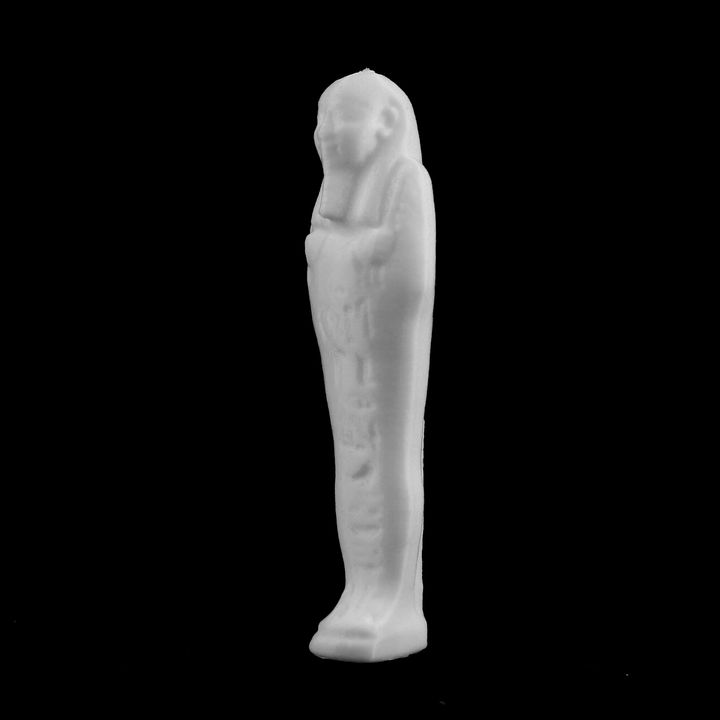
Ushabti at The Cardiff Museum, Wales
myminifactory
The ushabti, also known as shabti or shawabti, with various spellings, was a funerary figurine used in Ancient Egypt. Ushabtis were placed in tombs among the grave goods and were intended to act as servants or minions for the deceased, should he/she be called upon to do manual labor in the afterlife. The figurines frequently carried a hoe on their shoulder and a basket on their backs, implying they were intended to farm for the deceased. They were usually written on by the use of hieroglyphs typically found on the legs. Called "answerers," they carried inscriptions asserting their readiness to answer the gods' summons to work. The practice of using ushabtis originated in the Old Kingdom (c. 2600 to 2100 BCE) with the use of life-sized reserve heads made from limestone, which were buried with the mummy. Most ushabtis were of minor size, and many produced in multiples – they sometimes covered the floor around a sarcophagus. Exceptional ushabtis are of larger size, or produced as a one-of-a-kind masterpiece. Due to the ushabti's commonness throughout all Egyptian time periods, and world museums' desire to represent ancient Egyptian art objects, the ushabti is one of the most commonly represented objects in Egyptology displays. Produced in huge numbers, ushabtis, along with scarabs, are the most numerous of all ancient Egyptian antiquities to survive.
With this file you will be able to print Ushabti at The Cardiff Museum, Wales with your 3D printer. Click on the button and save the file on your computer to work, edit or customize your design. You can also find more 3D designs for printers on Ushabti at The Cardiff Museum, Wales.
